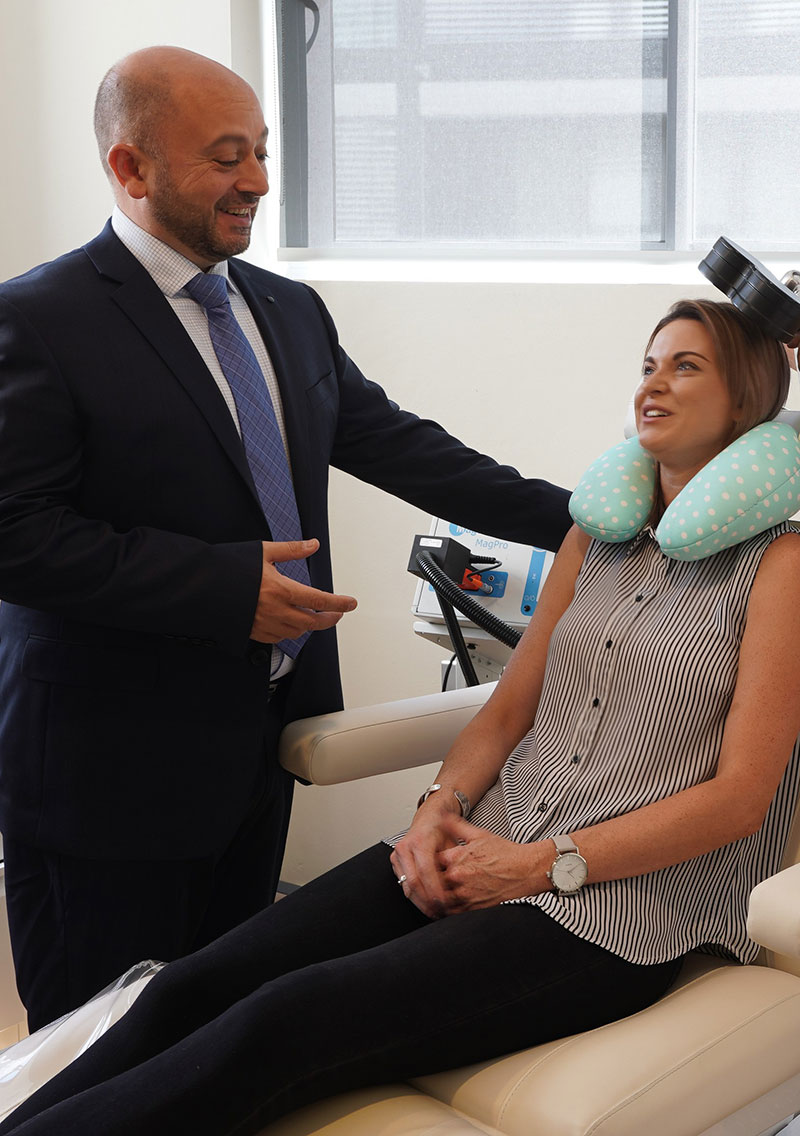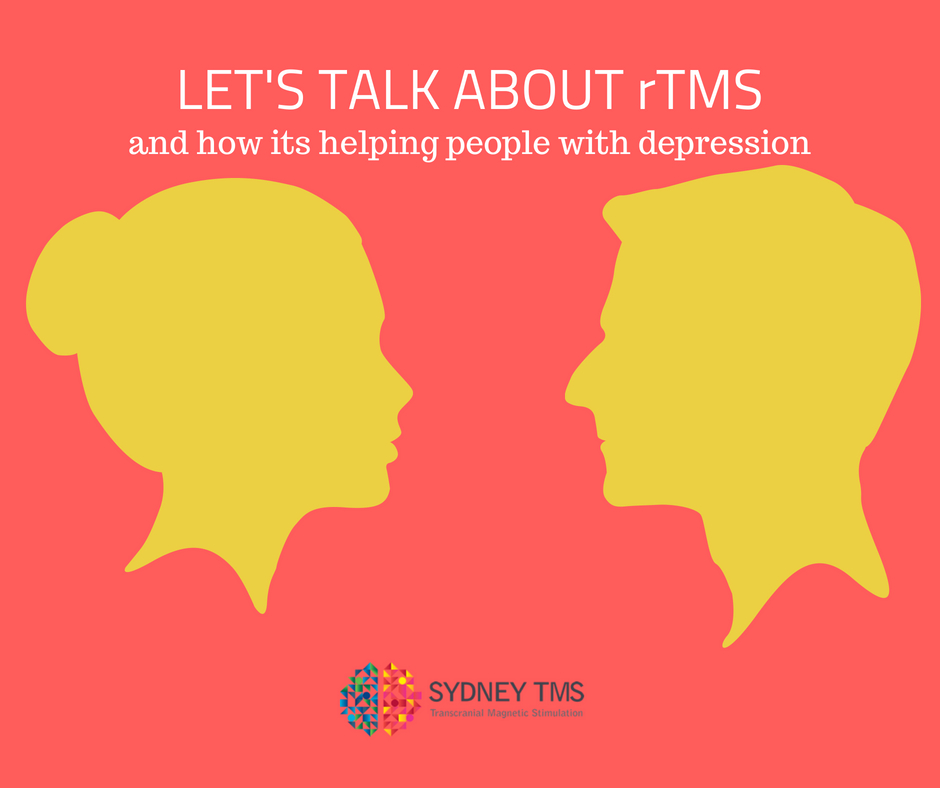rTMS depression
rTMS is short for repetitive Transcranial Magnetic Stimulation. rTMS is commonly intercharged for just TMS. rTMS is a treatment used to stimulate the brain when a diagnosis for depression, PTSD or OCD has been established. rTMS has been proven to help many people with treatment resistant depression.
How does rTMS work?
The technology involves the use of magnetic fields that are generated through a coil. This coil is placed on the targeted area of the head. The magnetic fields stimulate a small part of the brain where neurons have become inactive due to the mental health condition experienced by the patient.
rTMS treatment
During the treatment, the patient is fully awake and aware of everything going on. No sedatives or anaesthetic is used in the treatment. It is considered to be very well tolerated and safe. During the 30 minute session, the patient sits in the TMS chair and the TMS nurse places the coil on the cap worn by the patient which marks out the targeted area for the treatment. The settings specially designed for the patient are activated in the TMS machine and the coil commences treatment. During theta burst, two short but effective treatments are given during the 30 minute session. The treatment is provided on consecutive days, however, it is possible to have two sessions in one given day provided a half hour gap is accounted for in between sessions.
At Sydney TMS we provide rTMS in an outpatient setting. Patients can have treatment five days per week or they can have double sessions per day. Just so long as the patient attends for a minimum of 3 days per week.
rTMS is used to treat depression and can be offered when patients have not responded to other treatments. By other treatments, we refer to examples like antidepressant medication due to intolerable side effects or other approved treatments like cognitive therapy. Some patients have tried various therapies and are looking for an alternative treatment option.
It is important that a thorough psychiatric evaluation is undertaken for each patient by a psychiatrist experienced with TMS to determine if TMS is a suitable treatment option. A large body of evidence has accumulated over the past few decades supporting the use of rTMS to treat depression. The research supports that rTMS has antidepressant effects when applied correctly at a reputable an experienced organisation.
What are the side effects of rTMS?
The most common side effects are scalp irritation, headaches and tiredness during treatment or just after a treatment session. During treatment you may experience facial twitching but this will generally subside soon after the session. As the course of the rTMS continues further into treatment program, these side effects are likely to become less obvious or not even be noticeable. More about sideeffects are found here >>> rTMS side effects
The benefits of rTMS
The treatment offers the brain an opportunity to rebalance the brain’s activity particularly where activity has become altered due to the depression. Patients sit a comfortable reclining chair and are fully awake during treatment. The experience is well tolerated and it will feel like a tapping sensation on the head. A nurse is always present to guide you through each session and you can chat to the nurse, watch television or listen to music. Please allow 30 minutes for a session of TMS. After the treatment ends you can go about your day as your would normally. You can drive and even return to work or studies.
For more information about rTMS and if it will work for you, please call us for a no obligation consultation with our psychiatrist. You will need a GP or psychiatrist referral and a medicare card to proceed with the booking. Visit www.sydneytms.com.au for more information and details about rTMS and what to expect.
For more information about rTMS there is extensive information and excellent fact sheets available via the >> Blackdog Institute.


